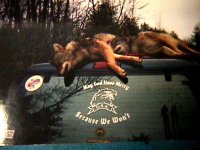Keith, certain plants are indicators of overgrazing. They replace the original grasses. So, the creosote bush or greasewood in the southwest spreads out when overgrazing destroys the root system--aided and abetted by drouth, etc. Further, in our area, we have a false agave called lecheguilla which parallels the greasewood, but commonly in either different soils or at different elevations.
The Terlingua area was heavily overgrazed during the WW I era. There are photos of lush grassland areas, "before"; now, some areas are bald clay moonscapes without even greasewood.
Dunno if it's still there, but there was a diorama at the Sonoran Desert Museum at Tucson of the Phoenix-Tucson area. It showed the lush grasslands, pre-ranching; the changes during the ranching period, and the greasewood-covered flats of today.
In the mountain states, sage is an indicator of overgrazing, replacing the original grasses. So, when you drive along and see hundreds or thousands of acres of sagebrush flats, you're looking at "ruint land".
These plants were originally present, but in much sparser populations.
Art

